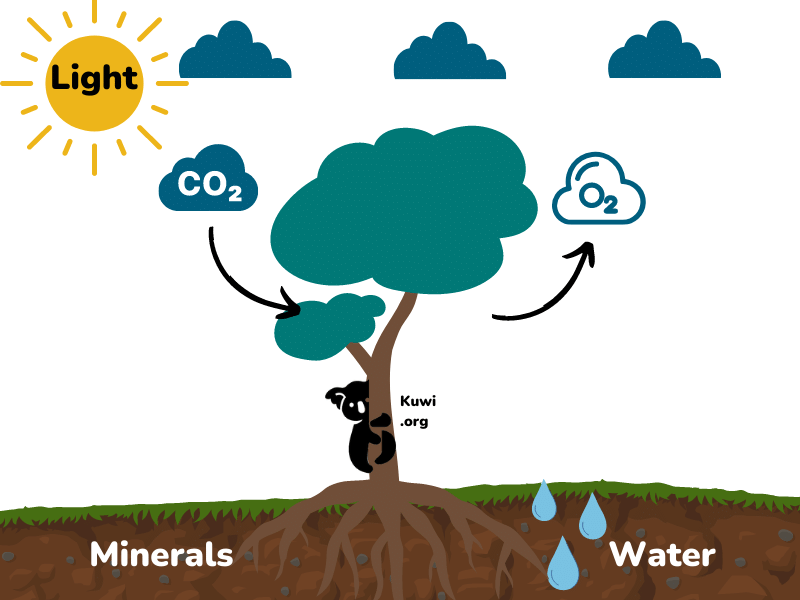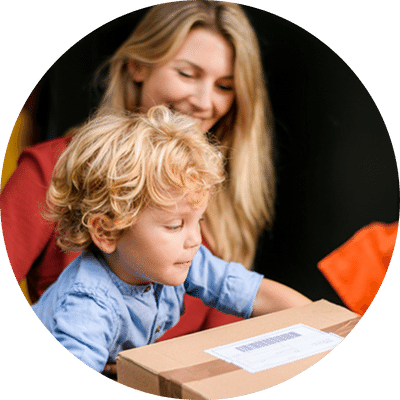How much CO₂ does a tree absorb?
Trees are often considered one of the most vital natural resources on Earth, and for good reason. They provide us with oxygen to breathe and play a crucial role in absorbing and storing carbon dioxide (CO₂), a greenhouse gas that contributes to global warming. Let’s take a look at how much carbon a tree absorbs and why it matters.
Short answer TL;DR
A tree absorbs about 22 kg of CO₂ per year. On average, an individual tree absorbs between 10 and 40 kilograms of CO₂ annually.
For example, a 30-year-old poplar can store up to 1 ton of CO₂.
How much CO₂ a tree absorbs depends on several factors, such as:
- Tree species: Some species, like poplars and oaks, absorb more CO₂ than others.
- Age: Young, fast-growing trees absorb more CO₂ than older trees.
- Size: Larger trees with more leaves absorb more CO₂ than smaller ones.
- Location: Trees in areas with plenty of sunlight and higher CO₂ levels absorb more CO₂.
- Health: Healthy trees absorb more CO₂ than diseased or stressed ones.
Note:
The amount of CO₂ a tree absorbs depends strongly on its age, species, growth rate, and environment.
Participants in the Kuwi.org reforestation program usually plant a diverse mix of tree species. For simplicity, we use one average figure — the estimated CO₂ absorption per tree calculated over its entire lifetime.
In its early years, a young tree absorbs relatively little CO₂ (around 3 kg per year). During the main growth phase, this increases significantly, up to about 40 kg per year. As a tree grows older and its growth slows down, CO₂ absorption gradually decreases again.
Still, older trees remain valuable carbon sinks — even trees over a hundred years old absorb around 5 kg of CO₂ per year.
How do trees absorb carbon?
rees absorb carbon through a process called photosynthesis. During photosynthesis, a tree takes in carbon dioxide from the air and, using it along with water and sunlight, produces glucose and oxygen. The glucose is used as energy to promote the tree’s growth, while the oxygen is released back into the air.
While trees absorb carbon throughout their entire lifespan, they typically do so more rapidly during their early years when they are growing most quickly. As a tree becomes larger and wider, it also becomes more efficient in photosynthesis, meaning it can absorb more carbon dioxide from the air.

How much carbon does a tree absorb?
The amount of carbon a tree absorbs depends on various factors, including species, age, size, and location. On average, a single tree absorbs 22 kg of carbon dioxide per year. Over its lifespan, which can span decades or even centuries, a single tree can absorb and store several tons of carbon dioxide.
It’s important to note that not all trees absorb carbon at the same rate. Younger trees, for instance, absorb more carbon per unit of biomass than older trees, while trees in tropical rainforests absorb more carbon than those in temperate forests. Additionally, certain tree species, such as oaks and pines, are more effective in carbon absorption than others.
Why growing trees absorb more carbon
Younger trees tend to absorb more carbon per unit of biomass than older trees. This is because younger trees are actively growing and producing new biomass, such as leaves, branches, and roots, which require more energy and, consequently, more carbon dioxide. In contrast, older trees have already reached their maximum size and exhibit lower rates of photosynthesis and carbon absorption.
Research has shown that the relationship between tree age and carbon absorption is not linear. Instead, it follows what is known as a sigmoidal curve. This means that younger trees absorb carbon more rapidly than older trees until they reach a point where their growth slows down. At this point, their carbon absorption starts to plateau, eventually reaching a maximum absorption rate. As the tree enters its final life stage, the absorption rate may decrease as it ages and loses leaves and branches.
While older trees may have a lower carbon absorption rate than younger trees, they still play a crucial role in carbon sequestration. Older trees can store more carbon per unit of biomass than younger trees, thanks to their larger size and extensive root systems. This means that even though older trees may not absorb as much carbon dioxide per year as younger trees, they can store more carbon throughout their entire lifespan.

Why does it matter?
Trees play a crucial role in mitigating the effects of climate change by absorbing and storing carbon dioxide. In fact, trees are among the most effective tools we have to reduce the carbon dioxide levels in the atmosphere. By planting and protecting trees, we can help decrease the amount of carbon dioxide in the atmosphere, which, in turn, can contribute to slowing down global warming.
Furthermore, trees provide a wide range of additional benefits, including producing oxygen, offering habitats for wildlife, and preventing soil erosion. By supporting healthy forests, we can create a more sustainable future for ourselves and for the planet as a whole.
In summary
Trees are an indispensable part of our planet’s ecosystem, and their ability to absorb and store carbon dioxide is one of their key functions. While the amount of carbon a tree absorbs depends on various factors, an average tree can absorb about 22 kilograms of carbon dioxide per year. By supporting healthy forests and planting new trees, we can help reduce the amount of carbon dioxide in the atmosphere, creating a more sustainable future for ourselves and future generations.
Which tree species absorbs the most CO₂?
The amount of carbon a tree absorbs over its lifespan can vary significantly depending on factors such as location, climate, soil type, and growth conditions. However, some tree species are known for their ability to sequester large amounts of carbon throughout their entire lives.
One such species is the giant sequoia (Sequoiadendron giganteum), native to the western United States. Giant sequoias are among the largest trees on Earth and can live for over 3000 years. Due to their enormous size, giant sequoias can store substantial amounts of carbon in their trunks, branches, and roots.
According to some estimates, an adult giant sequoia can store between 1800 and 2500 tons of carbon during its lifespan. To put this into perspective, one ton of carbon is equivalent to approximately 3.67 tons of carbon dioxide emissions. This means that a single giant sequoia can sequester the carbon emissions of hundreds of cars throughout its entire life.























